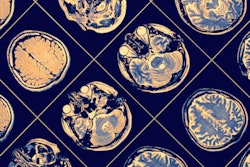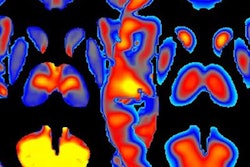
VIENNA - Using diffusion-tensor MRI (DTI-MRI), researchers found changes in frontal white-matter integrity in the brains of men who consumed excessive amounts of alcohol in their early teens, according to a study presented on Saturday at ECR 2019.
The group from China and Finland found reduced fractional anisotropy in men who were moderate to heavy early-age drinkers, compared with men who drank minimally. The researchers found no such changes, however, in women who consumed equally large amounts of alcohol at the same ages.
"Long-term subclinical alcohol use during adolescence is associated with altered white-matter integrity in frontal inter- and intrahemispheric fibers in men, even though they were not diagnosed with alcohol use disorders," said Dr. Qin Shen from the radiology department at the Second Xiangya Hospital in Changsha, China. "No such observations were found in women, suggesting different effects of excessive alcohol use on male and female adolescents."
Early imbibing
Alcohol is the most commonly used substance during adolescence, and long-term adolescent alcohol use has been associated with the development of serious psychosocial problems. However, even with a fair amount of research on the topic, "how alcohol consumption affects the developing human brain has not been fully elucidated," Shen told ECR attendees.
"Previous studies have focused on participants with different drinking patterns, mostly [with] alcohol use disorders or other substance abuse, such as marijuana," she said. "Most of the studies have been cross-sectional or longitudinal with limited data on drinking."
To fill that void, the researchers developed a longitudinal study to investigate the influence of long-term, excessive alcohol consumption during adolescence on the brain's white-matter microstructure. In the study, they used DTI and tract-based spatial statistics (TBSS) to evaluate fractional anisotropy.
Fractional anisotropy is a way to measure the flow of water molecules along white-matter tracts. Higher fractional anisotropy values indicate normal water flow, while lower values indicate disrupted flow and the likelihood of white-matter damage
Comparing habits
The study included 35 moderate to heavy drinkers (15 males, 20 females) and 27 light-drinking controls (12 males, 15 females) who met inclusion criteria over the course of the 10-year study. The research began in 2004 and 2005, when the participants were between 13 and 17 years old, and continued through 2010 and 2011 when they submitted follow-up questionnaires about their drinking activities.
None of the participants had been diagnosed with alcohol use disorders or other substance abuse issues. Their participation in the study was based, in part, on their Alcohol Use Disorders Identification Test (AUDIT-C) scores, which measured their consumption at three different time points over the 10 years.
The study concluded with final participant interviews between 2013 and 2015, along with psychiatric assessments of the subjects. The assessments included clinical evaluation of previous and current psychiatric disorders, as well as substance and alcohol abuse.
Both structural and DTI-MRI scans were performed at the end of the study; it was the only time that imaging exams were performed. The TBSS analysis included radial, axial, and mean diffusivity values within significant brain regions.
Gender differences
In their analyses, Shen and colleagues found significantly decreased fractional anisotropy values in the bilateral genu and body of the corpus callosum, superior and anterior corona radiata, and right inferior fronto-occipital fasciculus (p < 0.05) among the men who were moderate to heavy drinkers, compared with the men who were light drinkers.
In contrast, there was no significant difference or changes in white-matter microstructure or targeted brain regions between the women who were moderate to heavy drinkers, compared with their light-drinking counterparts.
"The results suggest there might be a gender difference in alcohol sensitivity between young men and women," Shen said.
One limitation of the study was a lack of longitudinal MRI data to compare how the longevity of excessive drinking affected the young men's white matter over time, she noted.



.fFmgij6Hin.png?auto=compress%2Cformat&fit=crop&h=100&q=70&w=100)




.fFmgij6Hin.png?auto=compress%2Cformat&fit=crop&h=167&q=70&w=250)











